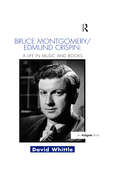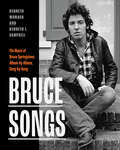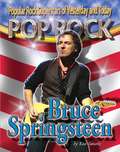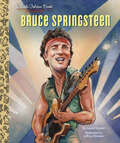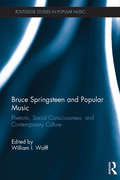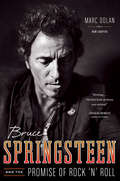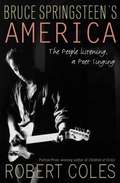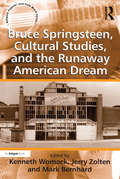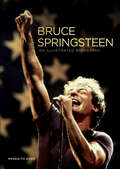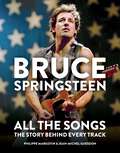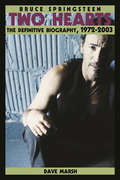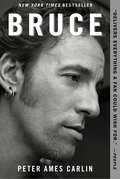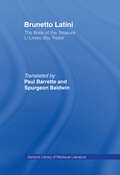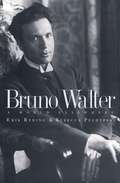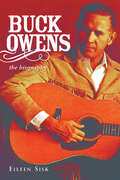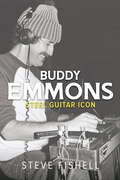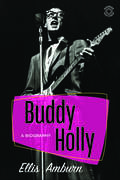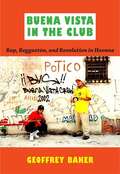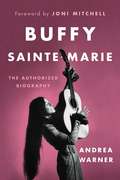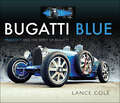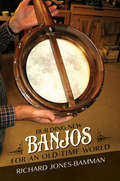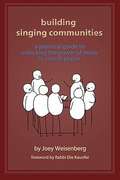- Table View
- List View
Bruce Montgomery/Edmund Crispin: A Life in Music and Books
by David WhittleUnder his real name, Bruce Montgomery (1921-1978) wrote concert music and the scores for almost 50 feature films, including some of the most enduring British comedies of the twentieth century, amongst them a number in the series started by Doctor in the House and the first six Carry On films. Under the pseudonym of Edmund Crispin he enjoyed equal success as an author, writing nine highly acclaimed detective novels and a number of short crime stories, as well as compiling anthologies of science fiction which helped to increase the profile of the genre. A close friend of both Philip Larkin and Kingsley Amis, Montgomery did much to encourage their work. In this first biography of Montgomery, David Whittle draws on interviews with people who knew the writer and composer. These interviews, together with in-depth research, provide great insight into the development of Montgomery as a crime fiction writer and as a composer in the ever-demanding world of films. During the late 1950s and early '60s these demands were to prove too much for Montgomery. Alcoholism combined with the onset of osteoporosis and a retreat into a semi-reclusive lifestyle resulted in him writing and composing virtually nothing during the last 15 years of his life. David Whittle examines the reasons for Montgomery's early and rapid decline in this thoroughly researched and engagingly written biography.
Bruce Songs: The Music of Bruce Springsteen, Album-by-Album, Song-by-Song
by Kenneth Womack Kenneth L. CampbellBruce Songs: The Music of Bruce Springsteen, Album-by-Album, Song-by-Song is an authoritative guide coauthored by renowned music scholar Kenneth Womack and music historian Kenneth L. Campbell and offering an in-depth exploration of Bruce Springsteen's musical legacy. Covering Springsteen's entire discography, from Greetings from Asbury Park, N.J. to Only the Strong Survive, this unique book combines historical context, literary analysis, and meticulous research. Unlike any other resource, it provides detailed analyses of each album, essays on their historical significance, and a chronological examination of every studio song. Discover the stories behind the recordings and gain insight into Springsteen's creative process. Rich with contemporary reviews, insider accounts, photographs, and special sections highlighting pivotal moments and key figures, Bruce Songs is an indispensable companion for fans and scholars. It offers an immersive journey through the music of The Boss, making it an essential read for anyone captivated by Springsteen's enduring musical legacy.
Bruce Springsteen
by Rae SimonsBruce Springsteen, known by his fans as simply the Boss, has been making music for the past thirty years. And he's still going strong. He's always been good at putting himself in other's shoes. His music deals with the plight of ordinary working people, whether they are cops and firefighters or road builders and steel workers. His rock ballads give voice to ordinary people's triumphs and tragedies. Find out more about this rock hero within the pages of this book. Learn about his rebellious youth, his beginnings as a rock star, his courageous stand on political issues, and his ongoing talent. Get to know the Boss! Book jacket.
Bruce Springsteen A Little Golden Book Biography (Little Golden Book)
by Laurel SnyderHelp your little one dream big with a Little Golden Book biographyabout Bruce Springsteen, "The Boss" of rock music. Little Golden Book biographies are the perfect introduction to nonfiction for young readers—as well as fans of all ages!This Little Golden Book about Bruce Springsteen--one of America's most iconic singer-songwriters, and 20-time Grammy Award-winner--is an inspiring read-aloud for young children, as well as their parents and grandparents who are fans of The Boss.Look for more Little Golden Book biographies: • Willie Nelson • Beyoncé • Dolly Parton • Taylor Swift • Tony Bennett
Bruce Springsteen and Popular Music: Rhetoric, Social Consciousness, and Contemporary Culture (Routledge Studies in Popular Music)
by William WolffThis interdisciplinary volume enters the scholarly conversation about Bruce Springsteen at the moment when he has reinforced his status of global superstar and achieved the status of social critic. Covering musical and cultural developments, chapters primarily consider work Springsteen has released since 9/11—that is, released during a period of continued global unrest, economic upheaval, and social change—under the headings Politics, Fear and Society; Gender and Sexual Identity; and Toward a Rhetoric of Springsteen. The collection engages Springsteen and popular music as his contemporary work is just beginning to be understood in terms of its impact on popular culture and music, applying new areas of inquiry to Springsteen and putting Springsteen fan writing within the same binding as academic writing to show how together they create a more nuanced understanding of an artist. Established and emerging Springsteen scholars approach work from disciplines including rhetoric and composition, historical musicology, labor studies, American history, literature, communications, sociology, theology, and government. Offering context, critique, and expansive understanding of Springsteen and his work, this book contributes to Springsteen scholarship and the study of popular music by showing Springsteen’s broadening academic appeal as well as his escalating legacy on new musicians, social consciousness, and contemporary culture.
Bruce Springsteen and the Promise of Rock 'n' Roll
by Marc Dolan<P> A vibrant biography of one of the greatest rock 'n' rollers, the America that made him, and the America he made. <P> This smart, incisive biography traces Bruce Springsteen’s evolution from a young artist who wasn’t sure what he wanted to say to an acclaimed musician with a distinctive vision for a better society. Brilliantly analyzing and evoking Springsteen’s output, Marc Dolan unveils the pulsing heart of his music: its deep personal, political, and cultural resonances, which enabled Springsteen to reflect on his experiences as well as the world around him. The book is now updated with a new chapter on The Promise, Wrecking Ball, and the 2012 tour.
Bruce Springsteen's America: The People Listening, a Poet Singing
by Robert ColesIn this compelling book, Robert Coles, the celebrated Harvard professor and Pulitzer Prize–winning author, turns his attention to popular music legend Bruce Springsteen, and to the powerful impact Springsteen’s work has had both on the lives of his audience and on this country’s literary tradition. Coles places Springsteen in the pantheon of American artists—Walt Whitman, William Carlos Williams, Dorothea Lange, and Walker Percy, among others—who understood and were inspired by their “traveling companions in time,” the ordinary people of their eras.With wisdom and a unique personal perspective, Coles explores Springsteen’s words as contemporary American poetry, and offers firsthand accounts of how people interact with them: A trucker listens to “Blinded by the Light” during long, lonely nights and reminisces about his mother; a schoolteacher is astonished when a usually silent student offers a comparison between “Nebraska” and Conrad’s Heart of Darkness; a policeman responds to “American Skin (41 Shots),” reflecting on his own role in his family and community. As these people, and others, candidly discuss the meaning Springsteen’s words have in their lives, Coles listens and, with the special insight and compassion that are the trademarks of his art, sheds new light on “The Boss,” removing the legendary American rock musician from fan-filled stadiums and placing the poet in a greater social, cultural, and philosophical context. Coles sees Springsteen as a representative of a uniquely American documentary tradition—as a sing-ing and traveling poet who does not simply embody the culture of which he is a part but fully engages it, interacting with its people and creating a conversation that has helped to shape a distinct way of looking at, and living, American life today.
Bruce Springsteen, Cultural Studies, and the Runaway American Dream (Ashgate Popular and Folk Music Series)
by Jerry ZoltenThere is little question about the incredible power of Bruce Springsteen's work as a particularly transformative art, as a lyrical and musical fusion that never shies away from sifting through the rubble of human conflict. As Rolling Stone magazine's Parke Puterbaugh observes, Springsteen 'is a peerless songwriter and consummate artist whose every painstakingly crafted album serves as an impassioned and literate pulse taking of a generation's fortunes. He is the foremost live performer in the history of rock and roll, a self-described prisoner of the music he loves, for whom every show is played as if it might be his last.' In recent decades, Puterbaugh adds, 'Springsteen's music developed a conscience that didn't ignore the darkening of the runaway American Dream as the country greedily blundered its way through the 1980s' and into the sociocultural detritus of a new century paralysed by isolation and uncertainty. Bruce Springsteen, Cultural Studies, and the Runaway American Dream reflects the significant critical interest in understanding Springsteen's resounding impact upon the ways in which we think and feel about politics, religion, gender, and the pursuit of the American Dream. By assembling a host of essays that engage in interdisciplinary commentary regarding one of Western culture's most enduring artistic and socially radicalizing phenomena, this book offers a cohesive, intellectual, and often entertaining introduction to the many ways in which Springsteen continues to impact our lives by challenging our minds through his lyrics and music.
Bruce Springsteen: An Illustrated Biography
by Meredith OchsA biography of the Boss from the streets of Freehold to rock stardom to the Broadway stage, loaded with performance and candid photos.Through story, images, and memorabilia, Bruce Springsteen: An Illustrated Biography chronicles the life of The Boss—one of America’s favorite rock stars and one of the biggest-selling artists in history. Springsteen’s monolithic music career spans over a half-century, from 1968 to the present, and has included dozens of tours and awards including twenty Grammys. Incredibly, his stage presence, star power, and musicianship is as strong as ever as he consistently sells out live performances. This book showcases his life both on and off the stage.This edition includes a new chapter covering Springsteen on Broadway
Bruce Springsteen: The Story Behind Every Track
by Jean-Michel Guesdon Philippe MargotinPlease note: this edition is text only and does not contain images.The most in-depth exploration of Springsteen's songs ever written.Spanning nearly 50 years of albums, EPs, B-sides, and more, this is the full story behind every single song that The Boss has ever released. Moving chronologically through Springsteen's long career, expert authors Margotin and Guesdon explore everything there is to know about every single song. No stone is left unturned across 670 pages, from the inspiration behind the lyrics and melody to the recording process and even the musicians and producers who worked on each track.Uncover the stories behind the music in this truly definitive book - a must-have for every Springsteen fan.
Bruce Springsteen: The Story Behind Every Track
by Jean-Michel Guesdon Philippe MargotinPlease note: this edition is text only and does not contain images.The most in-depth exploration of Springsteen's songs ever written.Spanning nearly 50 years of albums, EPs, B-sides, and more, this is the full story behind every single song that The Boss has ever released. Moving chronologically through Springsteen's long career, expert authors Margotin and Guesdon explore everything there is to know about every single song. No stone is left unturned across 670 pages, from the inspiration behind the lyrics and melody to the recording process and even the musicians and producers who worked on each track.Uncover the stories behind the music in this truly definitive book - a must-have for every Springsteen fan.
Bruce Springsteen: Two Hearts, the Story
by Dave MarshBruce Springsteen: Two Hearts is the definitive biography of one of the most important songwriters and performers of the last three decades. Critic Dave Marsh has traced Springsteen's career from its beginning, and has earned the singer's respect through his careful documentation and critical description of Springsteen's work. This biography brings together for the first time Marsh's two previous biographies, Born To Run (which covered Springsteen's early career through the mid-'70s) and Glory Days (which took him through the mid-'80s). Both were widely praised for their insightful and near definitive coverage of Springsteen's life and music. For this book, Marsh has written a new chapter covering major developments in Springsteen's career to today, particularly focusing on his album The Rising and its impact on American culture.
Bruce: Reflections On Bruce Springsteen
by Peter Ames CarlinPeter Ames Carlin’s New York Times bestselling biography of one America’s greatest musicians is the first in twenty-five years to be written with the cooperation of Bruce Springsteen himself; “Carlin gets across why Mr. Springsteen has meant so much, for so long, to so many people” (The New York Times).In Bruce, acclaimed music writer Peter Ames Carlin presents a startlingly intimate and vivid portrait of a rock icon. For more than four decades, Bruce Springsteen has reflected the heart and soul of America with a career that includes twenty Grammy Awards, more than 120 million albums sold, two Golden Globes, and an Academy Award. Peter Ames Carlin masterfully encompasses the breadth of Springsteen’s astonishing career and explores the inner workings of a man who managed to redefine generations of music. A must read for fans, Bruce is a meticulously researched, compulsively readable biography of a man laden with family tragedy, a tremendous dedication to his artistry, and an all-consuming passion for fame and influence.
Brunetto Latini: The Book of the Treasure - Li Livres dou Treasure (Library of Medieval Literature #Series B, Vol. 90)
by Brunetto LatiniFirst published in 1993. Routledge is an imprint of Taylor & Francis, an informa company.
Bruno Walter: A World Elsewhere
by Rebecca Pechefsky Erik RydingBruno Walter, one of the greatest conductors in the twentieth century, lived a fascinating life in difficult times. This engrossing book is the first full-length biography of Walter to appear in English. Erik Ryding and Rebecca Pechefsky describe Walter's early years in Germany, where his successes in provincial theaters led to positions at the Berlin State Opera and the Vienna State Opera. They then tell of his decade-long term as Bavarian music director and his romantic involvement with the soprano Delia Reinhardt; his other positions in the musical community until he was ousted from Germany when the Nazi Party came to power in 1933; and his return to Vienna, where he was artistic director of the Opera House until he was again forced out by the Nazis. Finally they trace his career in the United States, where he led the New York Philharmonic and other orchestras and in his last years made numerous recordings with the Columbia Symphony Orchestra, an ensemble created especially for him. Ryding and Pechefsky are the first biographers to make extensive use of the thousands of unpublished letters in the Bruno Walter Papers, now in the New York Public Library for the Performing Arts. In addition to interviewing more than sixty people who knew Walter, they examined countless reviews to assess the popular and critical impact he had on his times. Authoritative and even-handed, this biography sheds new light on Walter, one of the great formative influences in musical interpretation.
Brutality Garden
by Christopher DunnIn the late 1960s, Brazilian artists forged a watershed cultural movement known as Tropicalia. Music inspired by that movement is today enjoying considerable attention at home and abroad. Few new listeners, however, make the connection between this music and the circumstances surrounding its creation, the most violent and repressive days of the military regime that governed Brazil from 1964 to 1985. With key manifestations in theater, cinema, visual arts, literature, and especially popular music, Tropicalia dynamically articulated the conflicts and aspirations of a generation of young, urban Brazilians.Focusing on a group of musicians from Bahia, an impoverished state in northeastern Brazil noted for its vibrant Afro-Brazilian culture, Christopher Dunn reveals how artists including Caetano Veloso, Gilberto Gil, Gal Costa, and Tom Ze created this movement together with the musical and poetic vanguards of Sao Paulo, Brazil's most modern and industrialized city. He shows how the tropicalists selectively appropriated and parodied cultural practices from Brazil and abroad in order to expose the fissure between their nation's idealized image as a peaceful tropical "garden" and the daily brutality visited upon its citizens.
Buck Owens: The Biography
by Eileen SiskRetracing the life of Buck Owens--from his poverty-stricken youth as the son of a sharecropper to one of the nation's best-loved and wealthiest entertainers--this biography pays tribute to the man and his music by revealing his genius, his warmth, his humor, his vulnerabilities, and his flaws. It is based on personal sources, including original and latter-day Buckaroos, the cohost and the producer of Hee Haw, the former president of Capitol Nashville, and numerous country singers, relatives, ex-wives, ex-lovers, and ex-employees. The result is a 360-degree profile of a shrewd businessman--the polar opposite of the aw-shucks image he cultivated on Hee Haw. Owens was the top-selling country act of the 1960s--with 21 number-one hits and 35 consecutive top-10 hits from 1962 to 1972, a total surpassed only by the Beatles. One of his major contributions to this era was his invention of the Bakersfield sound, mixing electric guitars with a rock 'n' roll beat, which became popular with country and rock fans alike. This biography details the rift Buck had with the Nashville establishment, his reasons for never becoming a member of the Grand Ole Opry, the number of times Buck married, the truth about Buck posing in the nude for Playgirl, and his strained but professional relationship with Hee Haw cohost Roy Clark.
Buddy Emmons: Steel Guitar Icon (Music in American Life)
by Steve FishellThe acknowledged maestro of the pedal steel guitar, Buddy Emmons lent his unparalleled virtuosity to over five decades of hit recordings and set standards that remain the benchmark for musicians today. Steve Fishell’s merger of biography and memoir draws extensively on in-depth interviews with Emmons and the artist's autobiographical writings. Emmons went from playing strip clubs to a Grand Ole Opry debut with Little Jimmy Dickens at age 18. His restless experimentation led to work with Ernest Tubb and Ray Price--and established him in a career that saw him play alongside a who’s who of American music. Fishell weaves in stories and anecdotes from Willie Nelson, Brenda Lee, Linda Ronstadt, Pat Martino, and many others to provide a fascinating musical and personal portrait of an innovator whose peerless playing and countless recordings recognized no boundaries. A one-of-a-kind life story, Buddy Emmons expands our view of a groundbreaking artist and his impact on country music, jazz, and beyond.
Buddy Holly: A Biography
by Ellis AmburnThe definitive biography on Buddy Holly.Ellis Amburn presents the most comprehensive biography ever written about the legendary figure Buddy Holly, a young man who transformed the course of American music with his shocking blend of country, western, and rhythm 'n' blues.Having devoted the last five years of his life to this work—crisscrossing the rural paths of the United States from Texas to Iowa to Minnesota—Amburn portrays Holly as a mythic antihero, whose rebellious, dramatic life was a reaction against the constricting values of America in the 1950s, when his music was regarded as the work of the devil. From his wild days as a juvenile delinquent, to his first romances, to his early associations with then virtually unknown singers like Elvis Presley and Waylon Jennings, Holly emerges as a deeply tortured, driven individual and a brilliantly talented young man in a hurry to make it as a star. And like many stars, Buddy Holly’s would ultimately be tragic and bittersweet.
Buena Vista in the Club: Rap, Reggaetón, and Revolution in Havana
by Geoffrey BakerIn Buena Vista in the Club, Geoffrey Baker traces the trajectory of the Havana hip hop scene from the late 1980s to the present and analyzes its partial eclipse by reggaetn. While Cuban officials initially rejected rap as "the music of the enemy," leading figures in the hip hop scene soon convinced certain cultural institutions to accept and then promote rap as part of Cuba's national culture. Culminating in the creation of the state-run Cuban Rap Agency, this process of "nationalization" drew on the shared ideological roots of hip hop and the Cuban nation and the historical connections between Cubans and African Americans. At the same time, young Havana rappers used hip hop, the music of urban inequality par excellence, to critique the rapid changes occurring in Havana since the early 1990s, when the Soviet Union fell, its subsidy of Cuba ceased, and a tourism-based economy emerged. Baker considers the explosion of reggaetn in the early 2000s as a reflection of the "new materialism" that accompanied the influx of foreign consumer goods and cultural priorities into "sociocapitalist" Havana. Exploring the transnational dimensions of Cuba's urban music, he examines how foreigners supported and documented Havana's growing hip hop scene starting in the late 1990s and represented it in print and on film and CD. He argues that the discursive framing of Cuban rap played a crucial part in its success.
Buffy Sainte-marie: The Authorized Biography
by Andrea WarnerA biography of a noted folk and protest singer who strongly believes in a communal, cooperative approach to change, and who wrote such noted songs as "Universal Soldier" and "My Country 'Tis of Thy People You're Dying." Sainte-Marie is also a feminist and First Peoples advocate with her hard hitting lyrics.
Bugatti Blue: Prescott and the Spirit of Bugatti
by Lance ColeThe British have had an affair with Bugatti for decades and perhaps Prescott Hill-Climb in Gloucestershire is the place where that relationship has reached its highlights across the decades. This collection of photographic images captures the brilliance of Bugatti design amid Bugatti blue at Prescott's wonderful natural amphitheatre in the Cotswolds to which visitors, Bugatti owners, enthusiasts and addicts have travelled from all over the world to gather and to race up the hill.The author has spent years around old cars, often visiting Prescott and its home to the Bugatti Owners Club which itself celebrates the 80th anniversary of its base at Prescott in 2018 and, the Clubs own 90th anniversary in 2019.In this collection of over 200 photographs, much of the masterworks of Molsheim are captured in action and at rest, at the altar of British Bugatti enthusiasm. Herein are wonderful moments and memories of old Bugatti cars, their owners and drivers, and other vintage and classic cars in VS-CC action at this revered location.This new collection of stunning images, allied to a concise narrative (with assistance from Bugatti experts), should provide the classic car enthusiast with something new to accompany their own memories amid a record of Prescott and the Bugatti Owners Club events and Veteran Sports-Car Club days.
Building New Banjos for an Old-Time World
by Richard Jones-BammanBanjo music possesses a unique power to evoke a bucolic, simpler past. The artisans who build banjos for old-time music stand at an unusual crossroads ”asked to meet the modern musician's needs while retaining the nostalgic qualities so fundamental to the banjo's sound and mystique. Richard Jones-Bamman ventures into workshops and old-time music communities to explore how banjo builders practice their art. His interviews and long-time personal immersion in the musical culture shed light on long-overlooked aspects of banjo making. What is the banjo builder's role in the creation of a specific musical community? What techniques go into the styles of instruments they create? Jones-Bamman explores these questions and many others while sharing the ways an inescapable sense of the past undergirds the performance and enjoyment of old-time music. Along the way he reveals how antimodernism remains integral to the music's appeal and its making.
Building Singing Communities: A Practical Guide to Unlocking the Power of Music in Jewish Prayer
by Joey Weisenberg"Building Singing Communities" is an easy-to-read, how-to guide to making music a lasting and joy-filled force in shul and Jewish life. In this short book, author, musician, and educator Joey Weisenberg presents us with a veritable treasure house of musical opportunities. "Just think how far we could come," says Weisenberg, "if we treated the songs sung by our day-to-day, lay synagogue community as seriously as we do the music created by professional stage musicians? We could create an atmosphere of both great beauty and drama in our spaces of prayer; we would value each and every individual in our community as a creative musician, and encourage his or her efforts in an attitude of musical collaboration." "Building Singing Communities" is for the experienced musician and the musical layman alike. Its pages are full of practical guidance and heartfelt inspiration--the result of Weisenberg's spending hundred of hours working hands-on with Jewish communities across the U.S. and abroad. Pick it up when you need advice for leading a class; keep it close at hand for inspiration about how to make your shul a more song-filled place--or even for what to sing at your Shabbos table. "It's my hope that, with this collection of strategies you'll re-actualize the talents and potential of your community," writes Weisenberg, "reaping the benefits of re-starting what is, in fact, our beautiful, longstanding tradition of collective Jewish song." MECHON HADAR
